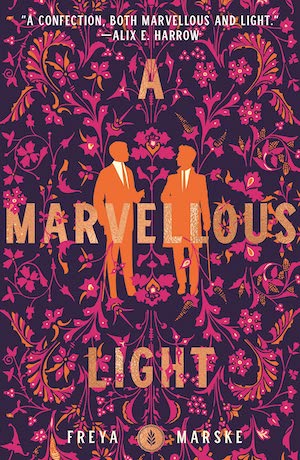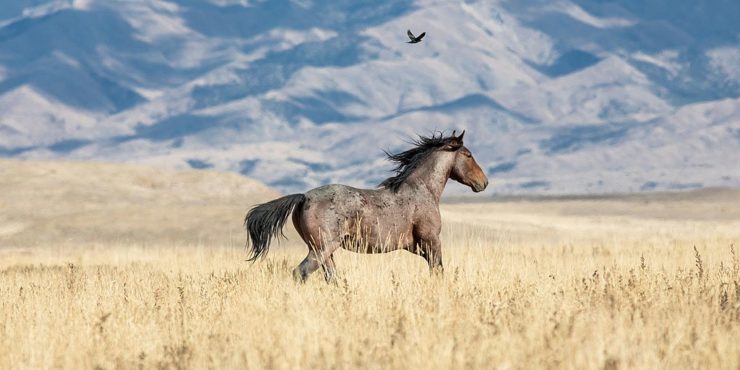The worlds of fantasy are rich with horses and horselike creatures. Kelpies, Pucas, Pegasi. Unicorns. Companions, horned Khentor horses, Mearas. And that doesn’t even include the more common or garden-variety horses and ponies who populate favorite novels and series (it never fails when I put up a post like this; someone is sure to mention Bela).
In our own world, certain breeds have achieved near-fantasy status. The Arabian—oldest breed in the world, its enthusiasts will tell you. The “Romantic” breeds: the horses of Iberia, the Lipizzan, the Vanner, the Friesian. The magically shimmering coat of the Akhal-Teke. The great warhorses, from the Great Horse of the Western knights to the small, tough, indestructible Mongol horse. The Marwari with its unique ears that meet at the tips. The tiny and incredibly long-lived Falabella, and the huge Shire horse, and the Clydesdale of beer-wagon fame. And many a USian child’s potentially achievable dream, the Chincoteague pony.
But even more than these, and maybe before any of them for many horsekids, the wild horse is the horse of dreams. The horse who can never be tamed. The epitome of freedom.
For horsekids Down Under, that horse is Thowra, the Silver Brumby, who will die rather than be captured and forced into servitude to man. In the Northern Hemisphere, there’s a whole legendary of the American Mustang. The wild stallion—it’s nearly always a stallion—who devotes his life to protecting his herd against the conquering human.
Buy the Book


A Marvellous Light
One branch of the genre fantasizes that one person can tame the untamable horse. That person is the only one with that power. Gandalf with Shadowfax is a classic example. The horse and the human achieve whatever their story needs them to achieve. Then, almost always, the human sets the horse free. Because freedom is the true goal of every horse, and every human should be wise enough to acknowledge it.
This dream of the wild horse is really more about the dreamer than the horse. As far back as stories go, both written and told, humans have projected their own dreams and wishes on the natural world. Animals enter those stories as representations of human desires. To be free is to live far away from the strictures of society, from the advance of technology and the destruction it too often brings.
In reality, the true wild horse went extinct long ago. The one variety of that had been thought to be a wild remnant, the Przewalski horse, has proved through DNA study to be a descendant of the first known domesticated horse, the Botai. All horses alive today are either human-raised or feral—descendants of horses raised by humans and escaped or released into the wild.
When I first heard that, I was disappointed. No wild horses? At all? Not one? Our other favorite companion animals, dogs and cats, still have wild relatives. But not horses.
And yet maybe it’s not as sad as it seems. Horses still can and will escape from captivity. They can seek out the wild world, and will survive there, as long as there’s water and forage and some way to elude predators.
It’s not an easy life. Horses in the barn or the pasture get to eat regularly. Water is there when they want it. If they’re injured or fall ill, they receive treatment. They’re protected against threats to life and limb, from large predators to insidious parasites.
Horses in the wild don’t get any of that. In a bad year, they’ll starve. In a good year, they may still run into problems: accident, illness, predators. The stallion who is free to breed any mare he can win, still has to win her—and that may mean fighting another stallion for her, or even facing her vehement refusal of his advances. If he’s hurt in the process, there’s no human to patch him up.
The mare’s lot isn’t the greatest, either. She can refuse a stallion, but carrying and delivering foal after foal will take a toll on her body. She won’t get extra nutrition to help her along, and if there’s a problem with the birth, there won’t be a human there to help.
Still, they get to live their lives in their own way, without human interference. They’re free, as humans think of it. They live the way their oldest ancestors did, before they came or were brought into the human world and pressed into human service.
Would a horse really rather be free under those terms, or would they be just as happy to live the domesticated life? That’s a question for the horsekid daydreaming by the pasture fence. Would my own horse be happier in the wild than he is with me?
My answer here is, Maybe. I had one horse who hated to be cold, who would have been miserable on the range. The ones who live here now would survive fairly well, I think. They’re tough, sturdy, and smart, with iron feet, and they don’t need a lot of feed; in fact if their feed is too rich, they’ll founder. They’d be happy enough on their own, as long as there was food to eat and water to drink.
But would they want it? They do like to eat regularly, and they’re very people-focused. They like doing things with humans. When they escape from their turnout, they never go anywhere. They head straight for the hay pile, and eventually come circling back around to me.
By that measure, I’d say they’re pretty thoroughly domesticated. Or I am, depending on your point of view.
Other horses, and other horsekids, might have a different answer. What about yours (or the horse in your dreams, if you’re currently horseless)? Would they define freedom as life in the wild, or as something else altogether?
Image: Wild Horse Running by Leslie Blue7, used under Creative Commons Attribution-Share Alike 4.0 International license.
Judith Tarr is a lifelong horse person. She supports her habit by writing works of fantasy and science fiction as well as historical novels. She’s written a primer for writers who want to write about horses: Writing Horses: The Fine Art of Getting It Right. She lives near Tucson, Arizona with a herd of Lipizzans, a clowder of cats, and a blue-eyed dog.










